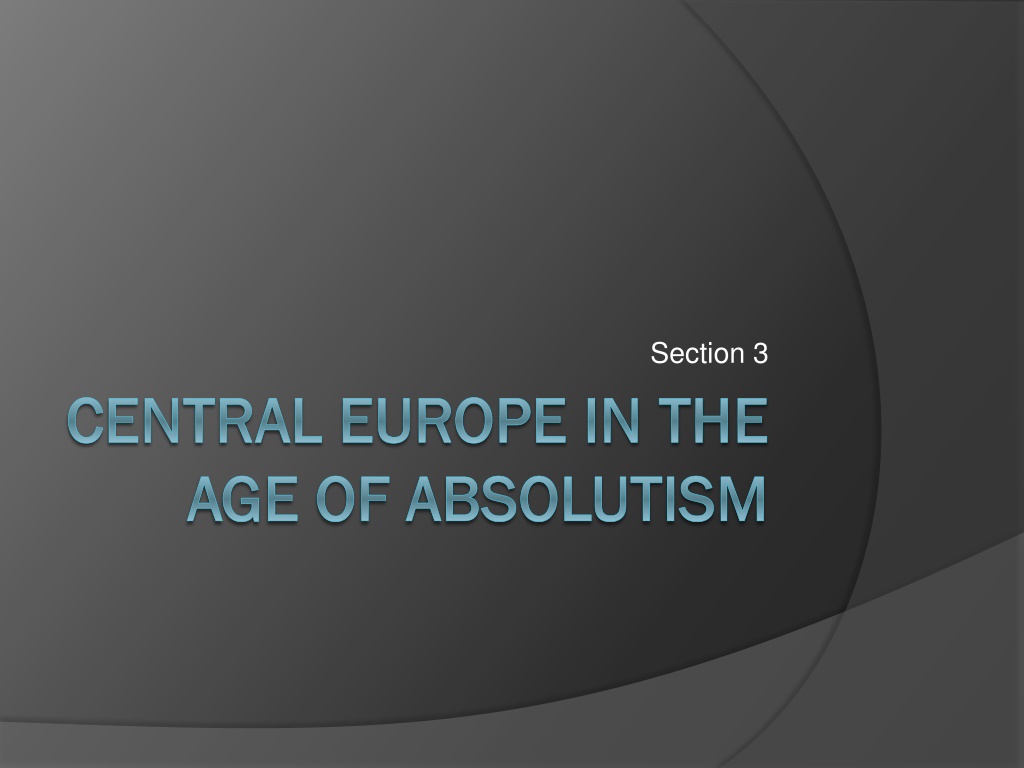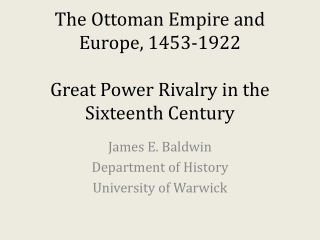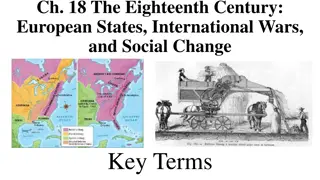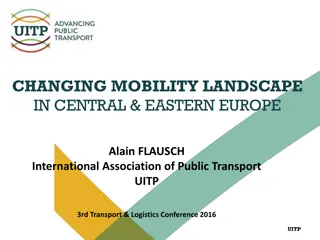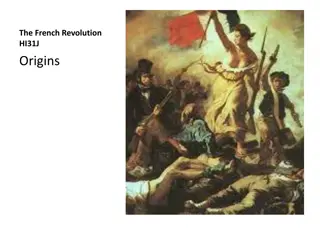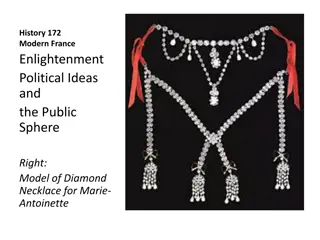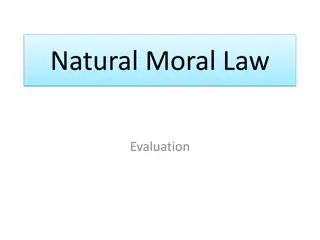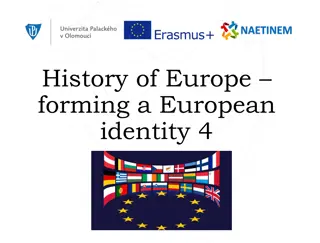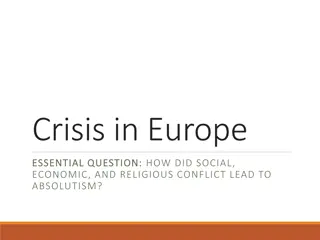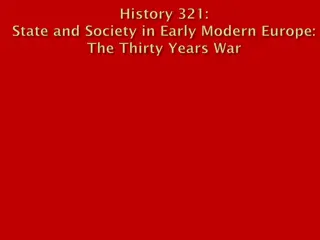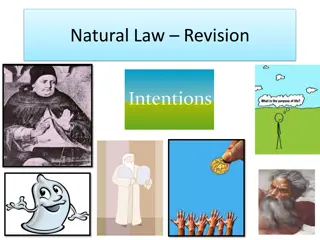Central Europe in the Age of Absolutism: Habsburgs and Hohenzollerns
Habsburg Austria lost and acquired territories, Maria Theresa inherited lands with the Pragmatic Sanction, leading to a diverse Hapsburg Empire. The rise of the Hohenzollerns in Brandenburg-Prussia saw Frederick William and Frederick the Great consolidating power through military and administrative reforms.
Download Presentation

Please find below an Image/Link to download the presentation.
The content on the website is provided AS IS for your information and personal use only. It may not be sold, licensed, or shared on other websites without obtaining consent from the author. Download presentation by click this link. If you encounter any issues during the download, it is possible that the publisher has removed the file from their server.
E N D
Presentation Transcript
Section 3 CENTRAL EUROPE IN THE CENTRAL EUROPE IN THE AGE OF ABSOLUTISM AGE OF ABSOLUTISM
Habsburg Austria Lost a lot of territory in Thirty Years War Over next 100 years, acquired new lands From Turks and Treaty of Utrecht Stretched into the Balkans, Hungary, and Italian Peninsula.
Maria Theresa: Inherited Austria and other Hapsburg lands. Male was suppose to inherit land, not Female. Pragmatic Sanction: Allowed Maria Theresa to inherit all the Hapsburg lands. Laws against her becoming empress When husband became Emperor, she became Empress.
Theresas/Hapsburg Empire Patchwork of regions and peoples Belgians, Bohemians, Croatians, Germans, Hungarians, Italians, Poles, Romanians, Serbs, and Slovenes. Led to many conflicts of language, religion, and nationality. German states became resentful to Hapsburg power. Character and size of Hapsburg Empire Geographic Cultural Historic diversity Made difficult to rule effectively.
Rise of the Hohenzollerns ruled Brandenburg-Prussia (Austria s chief rival) Goal: increase power and gain more land Branch of family settled in Brandenburg, N. Germany Ruler of Brandenburg became elector of HRE Ruled several territories including Prussia (Baltic Sea) Rulers: Frederick William (Great Elector) Ruled at end of Thirty Years War. Unified armies into one strong force. Improved tax system, agriculture, Industry, and transportation. Succeeded Great Elector, and all lands Unified in practice under rule of Prussia. Consolidated power for Honhenzollern family.
Frederick William I Son of Frederick William Ended lavished spending Doubled size of army and made efficient fighting force Discipline within army, punishments harsh, soldiers obeyed orders instantly. King: overhauled govt. and brought state as whole under control. Prussian army among most powerful army in Europe. Expanded interests and protected its borders. Tax collecting and government spending fully planned Encouraged trade and new industries Children required to go to school
Frederick the Great (Frederick II) Son of Frederick William I Worried that he was not interested in government or military affairs. Wrote poetry, played the flute, read philosophy King used harsh methods, including prison to change Fred II Frederick II and companion tried to escape Prussia When caught, king made Frederick watch companions execution. Frederick II Even stronger ruler than father Became ruler of Prussia same year as Maria Theresa became ruler of Austria. Highly intelligent and worked to expand Territory and prestige of Prussia.
Conflict Between Prussia and Austria Frederick II took Prussian Army to Silesia (Maria Theresa s powerful territory) Prussians seized Silesia easily. Started the War of Austrian Succession One side: Prussia, Bavaria, Spain, and France Other side: Austria, Great Britain, Netherlands, Russia Outcome: Austria lost, and Silesia went to Prussia.
Diplomatic Revolution reversal of alliances Austria and Great Britain were alliances/Great Britain now allied with Prussia To keep from Prussia from becoming too powerful, France sided with Austria and Russia.
Rivalries led to Seven Years War Fighting actually began in North America (French and Indian War) Battles took place on continent and in European colonies overseas. Prussia supported by Great Britain Austria supported by France/Russia Battles: Prussia defeated French forces. Prevented Austria from reclaiming Silesia. Prussians were defeated later badly by Austrian/Russia force. Great Britain won more battles in Canada/India
Turning Point: Empress of Russia, Elizabeth died Czar Peter III takes over. Great admiration for Frederick II. No desire to continue supporting Prussia s enemies. Broke alliance with Austria/France and made separate peace with Prussia. King George III: made clear his intention to withdraw. Seven Years War ended with no clear winner Signed treaty in 1763 Confirmed Prussia s hold on Silesia Treaty of Paris in same year: Gave most of North American territories to Great Britain.
Years of Peace Destruction and loss of life in Europe, North America, and India. Prussia and Russia drained treasuries Powers became reluctant to fight again Went from concentrating on war to recovery Monarchs continued ways to expand national boundaries, find new sources of wealth, and extend their powers. Frederick the Great: expanded public education, civil service system, and had tolerance for religious minorities. Prussia recovered economic prosperity. Prussia also gained new territory within these years.
